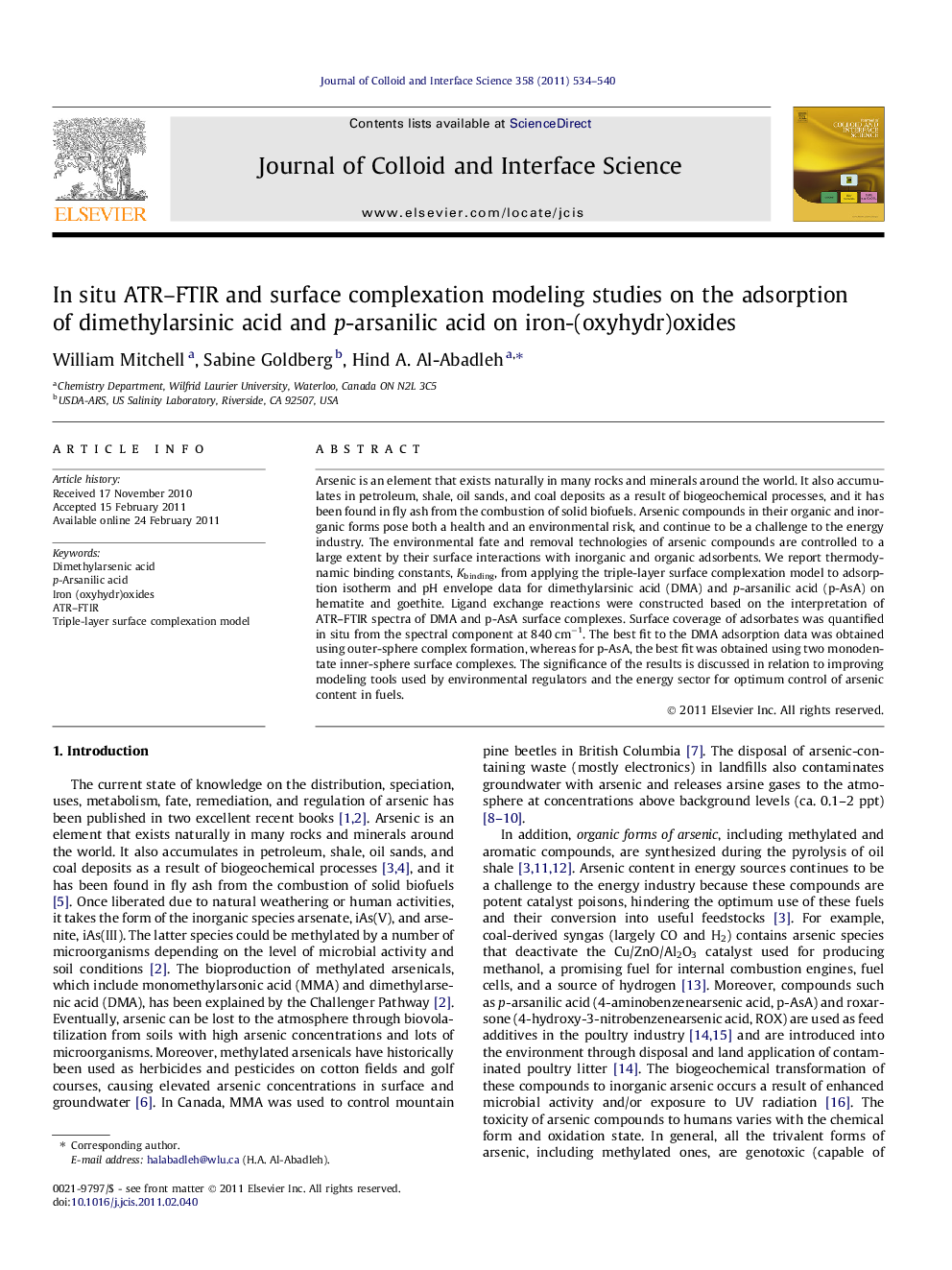| کد مقاله | کد نشریه | سال انتشار | مقاله انگلیسی | نسخه تمام متن |
|---|---|---|---|---|
| 608606 | 880604 | 2011 | 7 صفحه PDF | دانلود رایگان |

Arsenic is an element that exists naturally in many rocks and minerals around the world. It also accumulates in petroleum, shale, oil sands, and coal deposits as a result of biogeochemical processes, and it has been found in fly ash from the combustion of solid biofuels. Arsenic compounds in their organic and inorganic forms pose both a health and an environmental risk, and continue to be a challenge to the energy industry. The environmental fate and removal technologies of arsenic compounds are controlled to a large extent by their surface interactions with inorganic and organic adsorbents. We report thermodynamic binding constants, Kbinding, from applying the triple-layer surface complexation model to adsorption isotherm and pH envelope data for dimethylarsinic acid (DMA) and p-arsanilic acid (p-AsA) on hematite and goethite. Ligand exchange reactions were constructed based on the interpretation of ATR–FTIR spectra of DMA and p-AsA surface complexes. Surface coverage of adsorbates was quantified in situ from the spectral component at 840 cm−1. The best fit to the DMA adsorption data was obtained using outer-sphere complex formation, whereas for p-AsA, the best fit was obtained using two monodentate inner-sphere surface complexes. The significance of the results is discussed in relation to improving modeling tools used by environmental regulators and the energy sector for optimum control of arsenic content in fuels.
In situ adsorption studies of organoarsenicals on hematite and goethite complemented with triple layer surface complexation modeling.Figure optionsDownload high-quality image (62 K)Download as PowerPoint slideHighlights
► Adsorption isotherms and pH envelope data of DMA and p-AsA are modeled.
► Thermodynamic binding constants on hematite and goethite are reported.
► Surface complexation models were used based on a binding mechanism.
► Results provide improved modeling tools for environmental regulators and the energy sector.
Journal: Journal of Colloid and Interface Science - Volume 358, Issue 2, 15 June 2011, Pages 534–540